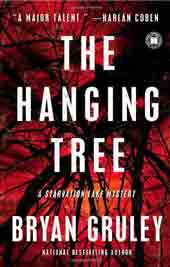 Earlier this fall, Bryan Gruley released the second book in his mystery series about a journalist in a small northern Michigan town. I liked the first title, Starvation Lake, very much, but like the second, The Hanging Tree, even more. Which is odd because the mechanics of the second mystery are a little less satisfying than the first. But the characters in The Hanging Tree were so deftly scripted, and their daily lives laid out with such believability, that I think the book is just terrific.
Earlier this fall, Bryan Gruley released the second book in his mystery series about a journalist in a small northern Michigan town. I liked the first title, Starvation Lake, very much, but like the second, The Hanging Tree, even more. Which is odd because the mechanics of the second mystery are a little less satisfying than the first. But the characters in The Hanging Tree were so deftly scripted, and their daily lives laid out with such believability, that I think the book is just terrific.
I’m not the only one, either. It was named one of the Michigan Notable Books of the Year, and listed as one of the Best Mysteries of the Year by Kirkus Reviews. There are probably a couple other accolades I’ve forgotten, but hey, call his publicist.
Bryan’s a friend of mine, so sure, I’m going to give his book a plug. But I also sincerely like these books. You don’t have to be a Michigander or a hockey fan to enjoy them (though it helps — I’m only one of those two). Bryan is a terrific storyteller with a deep personal affection for his characters and the lives they find themselves in, something that can’t be faked.
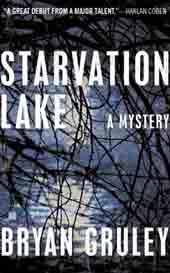 A couple months ago, I joked with Bryan about organizing excursions to Starvation Lake, Michigan, to show all the sites to the book’s fans. (Jon Berendt made this a sort of cottage industry with Savannah after writing Midnight in the Garden of Good and Evil.) Bryan scoffed at the idea, and made a self-deprecating comment about needing a few more readers.
A couple months ago, I joked with Bryan about organizing excursions to Starvation Lake, Michigan, to show all the sites to the book’s fans. (Jon Berendt made this a sort of cottage industry with Savannah after writing Midnight in the Garden of Good and Evil.) Bryan scoffed at the idea, and made a self-deprecating comment about needing a few more readers.
But I personally wanted to see the fictional town of Starvation Lake. Somehow the descriptions in the second book challenged my assumptions and made it hard to visualize it further. The road is where? You can see THAT from HERE? Etc.
So over Christmas break on the way back from skiing up north, I took my family on a little side trip to the actual Starvation Lake. We got off US 131 in Mancelona, hoping to come at it from the north. Things were pretty snow covered up there. I don’t know how many of you live in places where there are official snowmobile paths laid crossing the highway, but there were plenty up there. We went about 5 miles, realized we missed the turnoff, turned around and went down a road that wasn’t exactly paved but had farmhouses on it. So, you know, civilization.
Well, it stayed snow covered, then it veered back west when we wanted to go south. So I forged ahead on what looked like a single-lane road, not uncommon in the country. It was pretty rutty and rocky. We passed another farmhouse or two as the trees got to be a little thicker. it was a guessing game which roads were more “official” and likely to coincide with the map. I saw some stop signs in the distance, which was comforting, but they weren’t standard size. Maybe the county was saving money on the back roads by putting up mini-signs? Some routes were very evidently for snow-mobiles, and some not so evidently.
 Everyone in the car but me was getting worried that we’d be sending Christmas Eve either stuck in the frost-bitten Michigan outback or in a hospital from an accident. I’ve been on slippier roads, but not recently and not sober. I turned east on what looked like a major road–by that I mean it was wide and had tracks on it and everything–and followed that winding path until we dead-ended at a small oil pump bobbing it’s head arthritically amid the snow and dried cattails.
Everyone in the car but me was getting worried that we’d be sending Christmas Eve either stuck in the frost-bitten Michigan outback or in a hospital from an accident. I’ve been on slippier roads, but not recently and not sober. I turned east on what looked like a major road–by that I mean it was wide and had tracks on it and everything–and followed that winding path until we dead-ended at a small oil pump bobbing it’s head arthritically amid the snow and dried cattails.
Okay, at this point I was persuaded that maybe this Kit Carson route wasn’t the best way to go, so we tried to find our way back. I did a Y-turn at the oil pump and didn’t end up stuck. Chalk one up for 35 years of winter driving. Just before a fork in the road, we caught a glimpse of a half-dozen snowmobilers blasting through the snow about 20 yards away. I slowed and stopped and gave the right of way, as if we were both on the roads designated for us. I still resolutely denied that I was driving on a snowmobile trail. I was on the road for the oil trucks, y’betcha.
I found our way back to a road with a real name (I’m pretty good with directions), and we drove all the way back to Mancelona. But I absolutely had to see the place by now, even though it was eating into our time to return and get ready for Christmas Eve. We took another left eastward off 131 and plowed on for a few miles. The road was still snow covered, but in certain patches you could see that there was indeed a paved road under it. Such City Slickers, needing pavement! After a while, we saw the sign for a Starvation Lake supper Club (“Champs”? I don’t remember), and followed the signs. They advertised “The Best Hamburgers in the World”, and judging by the cars in the lot, they must’ve been cooking something right (unless everyone was already getting tanked up for the holiday). We were still full from the gigantic bismarcks and bearclaws we’d bought in Petoskey at the beginning of the trip home, so we didn’t stop at the bar. I drove around Starvation Lake, hoping to maybe see the Gruley name on a mailbox or garage, but it was not to be. I even looked for the “hanging tree” the book is named after, but without luck. That will have to wait for another trip.
 I knew there was no real town called Starvation Lake. Bryan has said he modeled the town after another nearby city. Just guessing on the map, I thought he meant nearby Twin Lake. Which is good. Starvation Lake has exactly two commercial buildings. Both taverns. Twin Lake has two taverns AND a provisions store.
I knew there was no real town called Starvation Lake. Bryan has said he modeled the town after another nearby city. Just guessing on the map, I thought he meant nearby Twin Lake. Which is good. Starvation Lake has exactly two commercial buildings. Both taverns. Twin Lake has two taverns AND a provisions store.
Bryan must have been modeling the town after the nearby city of Mancelona. That place has brick buildings housing diners and insurance companies and hardware stores and the like. But it’s a little too big, and it sits alongside the US highway and not on the shore of a good-sized glacier-carved lake, so it can’t help in painting a mental image for me. (BTW, the actual Starvation Lake was absolutely gorgeous in the winter sunlight, sunk below the bluffs and curving subtly so it can’t all be seen from any one vantage point.) For now, it’s all in Bryan’s head, and I’ll just have to reread the books if I want a snapshot.
Photo of snowmobile trail from www.visitGaylord.com.
Linoleum print of Michigan, one of a 50-state series, found at Two Eyeballs.
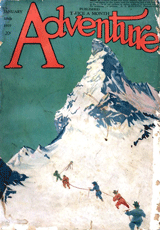 That’s the best name that anyone came up with for Chicago’s recent run-in with Mother Nature, SNOMG. I wanted to call it Snowbamapalooza, but it never really caught on.
That’s the best name that anyone came up with for Chicago’s recent run-in with Mother Nature, SNOMG. I wanted to call it Snowbamapalooza, but it never really caught on.

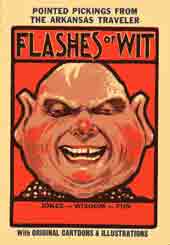 Am I the only one who hates The New Yorker caption contest?
Am I the only one who hates The New Yorker caption contest?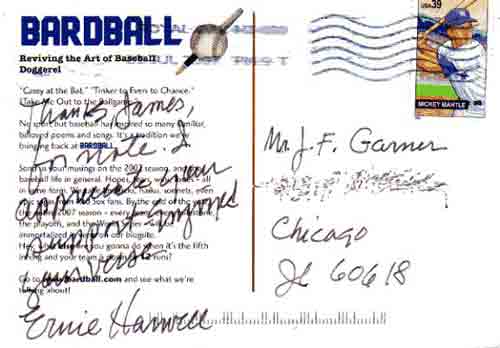

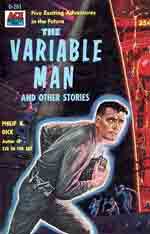 Freezing mornings. Long stretches of silence. Ice-covered streets. This is a time of year I love. It’s also the time of year I go a little stir-crazy in my basement and start to think that I’ve got to get some kind of job.
Freezing mornings. Long stretches of silence. Ice-covered streets. This is a time of year I love. It’s also the time of year I go a little stir-crazy in my basement and start to think that I’ve got to get some kind of job.  Earlier this fall, Bryan Gruley released the second book in his mystery series about a journalist in a small northern Michigan town. I liked the first title,
Earlier this fall, Bryan Gruley released the second book in his mystery series about a journalist in a small northern Michigan town. I liked the first title,  A couple months ago, I joked with Bryan about organizing excursions to Starvation Lake, Michigan, to show all the sites to the book’s fans. (Jon Berendt made this a sort of cottage industry with Savannah after writing Midnight in the Garden of Good and Evil.) Bryan scoffed at the idea, and made a self-deprecating comment about needing a few more readers.
A couple months ago, I joked with Bryan about organizing excursions to Starvation Lake, Michigan, to show all the sites to the book’s fans. (Jon Berendt made this a sort of cottage industry with Savannah after writing Midnight in the Garden of Good and Evil.) Bryan scoffed at the idea, and made a self-deprecating comment about needing a few more readers. Everyone in the car but me was getting worried that we’d be sending Christmas Eve either stuck in the frost-bitten Michigan outback or in a hospital from an accident. I’ve been on slippier roads, but not recently and not sober. I turned east on what looked like a major road–by that I mean it was wide and had tracks on it and everything–and followed that winding path until we dead-ended at a small oil pump bobbing it’s head arthritically amid the snow and dried cattails.
Everyone in the car but me was getting worried that we’d be sending Christmas Eve either stuck in the frost-bitten Michigan outback or in a hospital from an accident. I’ve been on slippier roads, but not recently and not sober. I turned east on what looked like a major road–by that I mean it was wide and had tracks on it and everything–and followed that winding path until we dead-ended at a small oil pump bobbing it’s head arthritically amid the snow and dried cattails. I knew there was no real town called Starvation Lake. Bryan has said he modeled the town after another nearby city. Just guessing on the map, I thought he meant nearby Twin Lake. Which is good. Starvation Lake has exactly two commercial buildings. Both taverns. Twin Lake has two taverns AND a provisions store.
I knew there was no real town called Starvation Lake. Bryan has said he modeled the town after another nearby city. Just guessing on the map, I thought he meant nearby Twin Lake. Which is good. Starvation Lake has exactly two commercial buildings. Both taverns. Twin Lake has two taverns AND a provisions store. 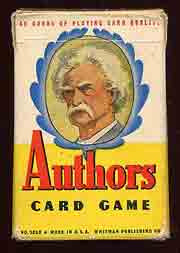 Just got off the phone with a journalist from Le Temps, which is a big daily newspaper in Switzerland. She wanted my opinion on the bowdlerization of The Adventures of Huckleberry Finn, which has dominated the news cycle during this slow week. I’m Mr. Politically Correct, after all, so I was flattered to be remembered and asked my opinion. At least her call forced me to think a little about the plan and my reactions to it.
Just got off the phone with a journalist from Le Temps, which is a big daily newspaper in Switzerland. She wanted my opinion on the bowdlerization of The Adventures of Huckleberry Finn, which has dominated the news cycle during this slow week. I’m Mr. Politically Correct, after all, so I was flattered to be remembered and asked my opinion. At least her call forced me to think a little about the plan and my reactions to it.

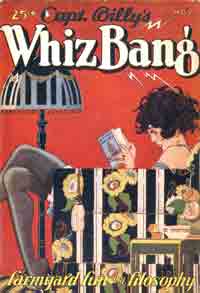 Some readers out there might know that every Christmas for the past 20 years or so, I have attempted to write some kind of Yule-themed story for my wife. The first story I ever had published, entitled “Jerry’s Last Fare” in the late Chicago Tribune Magazine, was also the first I ever wrote as a gift to my wife. For better or worse, I took it as an omen.
Some readers out there might know that every Christmas for the past 20 years or so, I have attempted to write some kind of Yule-themed story for my wife. The first story I ever had published, entitled “Jerry’s Last Fare” in the late Chicago Tribune Magazine, was also the first I ever wrote as a gift to my wife. For better or worse, I took it as an omen.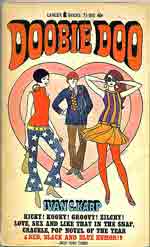 Some people’s Christmas memories smell like gingerbread, or pine trees, or egg nog.
Some people’s Christmas memories smell like gingerbread, or pine trees, or egg nog.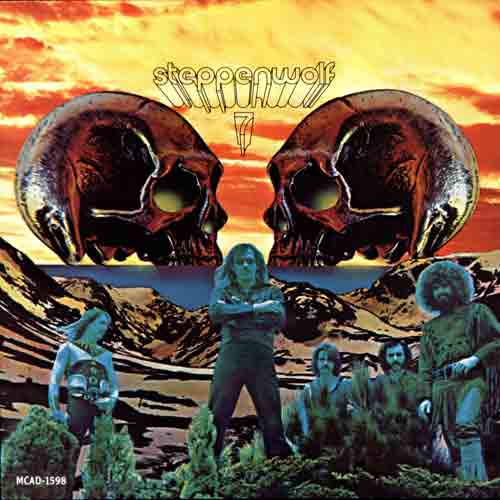
 Many of the other gifts of that time also had a distinct counter-culture vibe to them. Designs were getting bolder, sleeker. The Panasonic Ball radio was pretty “boss”, and lasted a surprisingly long time. Puzzles like SOMA were much cooler than the board games we used to get. Even the jigsaw puzzles in our stockings were getting cooler, in round shape with fantastical characters on them like giant Mer-men. We received macracmé belts and string art kits, because we were a pretty crafty family.
Many of the other gifts of that time also had a distinct counter-culture vibe to them. Designs were getting bolder, sleeker. The Panasonic Ball radio was pretty “boss”, and lasted a surprisingly long time. Puzzles like SOMA were much cooler than the board games we used to get. Even the jigsaw puzzles in our stockings were getting cooler, in round shape with fantastical characters on them like giant Mer-men. We received macracmé belts and string art kits, because we were a pretty crafty family.